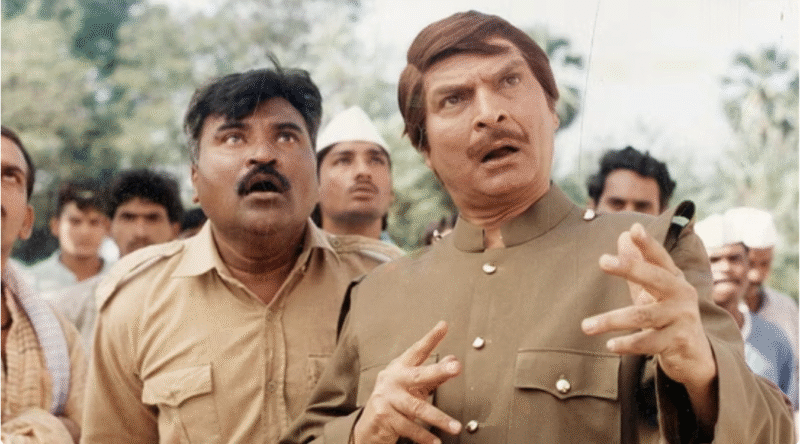When the credits roll for some of Bollywood’s most beloved films of the 1970s and ’80s, one name often appears quietly yet unmistakably: Asrani. With his unassuming looks, impeccable comic timing, and a versatility that allowed him to shine even in supporting roles, he became one of Indian cinema’s most trusted “everyman” actors.
From FTII to Filmsets
Born Govardhan Ashwin “Asrani” in 1941 in Bhawanipatna, Orissa, he trained at the Film and Television Institute of India (FTII). Unlike the larger-than-life heroes of his era, Asrani looked like a regular guy—average height, modest build, a face easily forgotten—but that very normalcy became his greatest asset. In an era when men who looked like him did not get to play heroes, Asrani’s very presence lifted the films he did.
The Jailor Who Became Iconic
One of his most unforgettable turns came in Sholay (1975), arguably the biggest film of its time. As the arrogant British-era jailor barking orders—“half of you go here, half go there, and the rest come with me”—he owned the screen despite the towering ensemble of stars. That scene remains etched in the public’s memory as much as the leads themselves.
A Master of Many Shades
But Asrani was never just the comic relief. He delivered serious performances too, such as in Koshish (1972) and Mere Apne (1971), and even attempted to lead with Chala Murari Hero Banne (1977). While the film didn’t fare well, it underscored his willingness to break out of the mould.
On-Screen Partnerships and Everyday Appeal
His on-screen partnership with Rajesh Khanna was a golden one—over 20 films together, including Bawarchi (1972), Namak Haraam (1973), and Aap Ki Kasam (1974). Audiences came to expect Asrani alongside Khanna; his absence in a Khanna film often felt like something was missing.
What stood Asrani apart in the comedy landscape was his refusal to descend into crassness. He provided laughter without emptiness, character without caricature. He was one of those rare comedians who didn’t have to succumb to vulgarity—his very presence lifted the films he did.
A Quiet Legacy in Changing Times
As Hindi cinema shifted toward louder comedy and more flamboyant characters, actors like Asrani found fewer fitting roles. Still, he adapted—appearing in Gujarati films, exploring parallel cinema, and even acting in web series recently. One scene in a recent series found him as a canny Parsi lawyer—age-worn face, rapid lines—reminding viewers of his enduring brilliance.
Why Asrani Matters
- Relatability: He could be any of us—a neighbour, friend, or office buddy—and yet command a scene.
- Versatility: From comedy to serious roles, supporting to occasional leads, he never felt type-cast.
- Integrity: In his craft and presence, he upheld dignity over cheap laughs.
- Timing: Both in his comic rhythm and his choice of roles, he always knew when to step back and when to shine.
In Retrospect
In an industry obsessed with stardom and glamour, Asrani carved out a lasting niche by being steady, authentic, and essential. His face may not have worn the garland of hero-worship, but his performances earned a different kind of reverence—one that comes from timeless familiarity and genuine craft.











